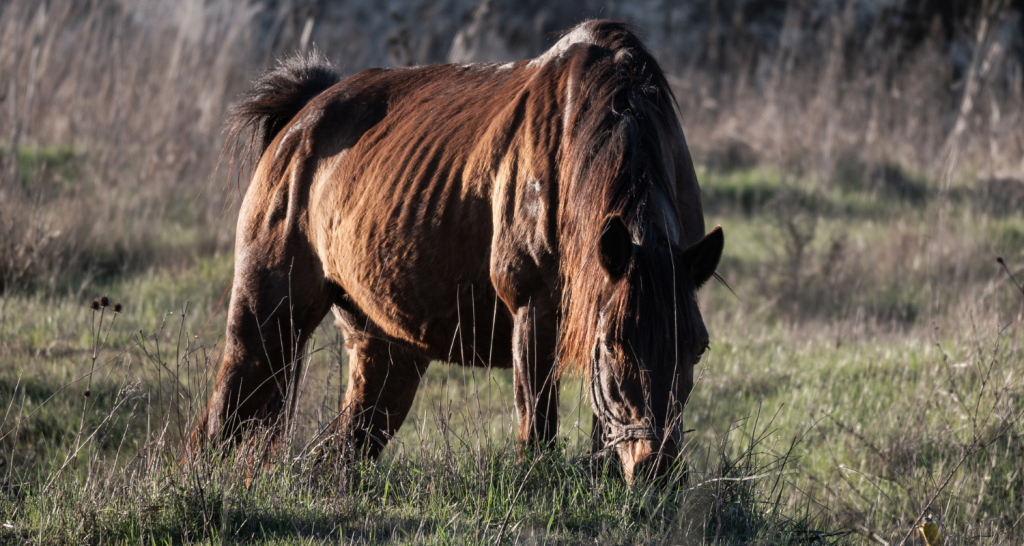Uncategorized
Refeeding a Malnourished Horse
Refeeding a malnourished horse
Malnourished, emaciated, and neglected horses are difficult for any horse lover to see. While it’s tempting to rescue these horses and immediately give them lots of food with hopes to quickly fatten them up, its important to begin the refeeding process of horses in these sad scenarios slowly. When horses have a body condition score below 2 it’s important to work with your veterinarian on a refeeding program as to not harm them through overfeeding too quickly. Body condition scoring is done by evaluating the fat deposit under the horses skin in six key areas; neck, withers, behind the shoulder, along the back, rib area and tail head. These areas are assessed by visual and palpable examination (4).
Feeding malnourished horses too quickly can lead to refeeding syndrome. Refeeding syndrome is a severe, (and potentially fatal) electrolyte and fluid shift associated with metabolic abnormalities (2). This imbalance can result in cardiac failure, fluid overload, hypotension, prerenal failure and even potentially death (2).
UC Davis has done research on experimental diets for refeeding horses, and through their research have found that small frequent feedings of high quality of alfalfa tends to be the best tolerated (3). In speaking with your veterinarian, you will be able to develop a refeeding program best suited for individual cases. The use of gastroprotectants such as Gastrogard or Ulcergard are beneficial for some horses and probiotics with live yeast such as Equiotic and Equibios can be helpful for some horses and both should be discussed with your veterinarian (3). Fresh water should be offered in buckets that allow you to measure what is consumed.
Links:
https://extension.umn.edu/horse-health/caring-underweight-horse (1)
M.A Crook, V Hally, J.V Panteli, The importance of the refeeding., Nutrition, Volume 17, Issues 7–8, 2001, Pages 632-637, ISSN 0899-9007, https://doi.org/10.1016/S0899-9007(01)00542-1 (2)
Stull, C. “Nutrition for Rehabilitating the Starved Horse.” UC Davis Veterinary Medicine. https://ceh.vetmed.ucdavis.edu/sites/g/files/dgvnsk4536/files/local_resources/pdfs/pubs-July2012-bkm-sec.pdf (3)
Burkholder, W J. “Use of body condition scores in clinical assessment of the provision of optimal nutrition.” Journal of the American Veterinary Medical Association vol. 217,5 (2000): 650-4. https://avmajournals.avma.org/view/journals/javma/217/5/javma.2000.217.650.xml (4)

